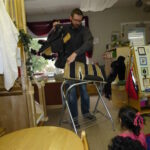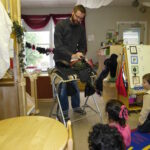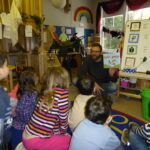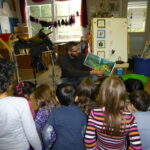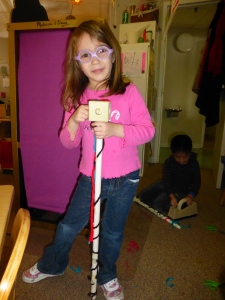It is now March and our story is starting to take shape. Each character now fits into one story that not only has a beginning, middle, and an end but it finally has a plot as well! The story and script is completely written by the students and it quite colorful, to say the least.
Enjoy!
(Please note that some students may be missing from this version as they were out due to illnesses)
The Three Horses (March 6, 2013)
The mean ballerina fairies are having a party under the bridge. (Cl, Ra, So)
Along came the littlest horse (K)
“No one is allowed on our bridge, it’s just for us!” said the mean ballerina fairies.
“Wait for my medium brother. She is much bigger and much juicier.” Said the littlest horse.
And the horse went across the bridge and ate at the grassy hill. (K)
When along came two medium sister horses. (Sa and Re)
“You can’t go across our bridge, it’s just for us!” said the fairies. “You have to solve our riddle. What makes scribbles? The second answer is those kind of scissors. Now you may cross.”
And the medium sister horses crosses the bridge.
Then came along the big daddy horse.
“You can’t go across our bridge, it’s just for us!” (Fairies)
“What do I have to do then?” (So)
“You have to solve a daddy troll mystery. Who goes into something tall?” (Fairies)
“People in the loft.” said the bid daddy horse and she knocks them over. (So)
When along came two Thomas trains. (A and Ev)
“You can’t go across our bridge, it’s just for us!” (Fairies)
“Beep beep!” said the two Thomas trains and they went across the bridge.
And the three mean ballerina fairies were trying to figure out what was going on, a rotten egg (J) rolled in and the mean fairies tried to cook it. But the rotten egg rolled away.
And they all came back to have a dance party on the bridge.
The End.




